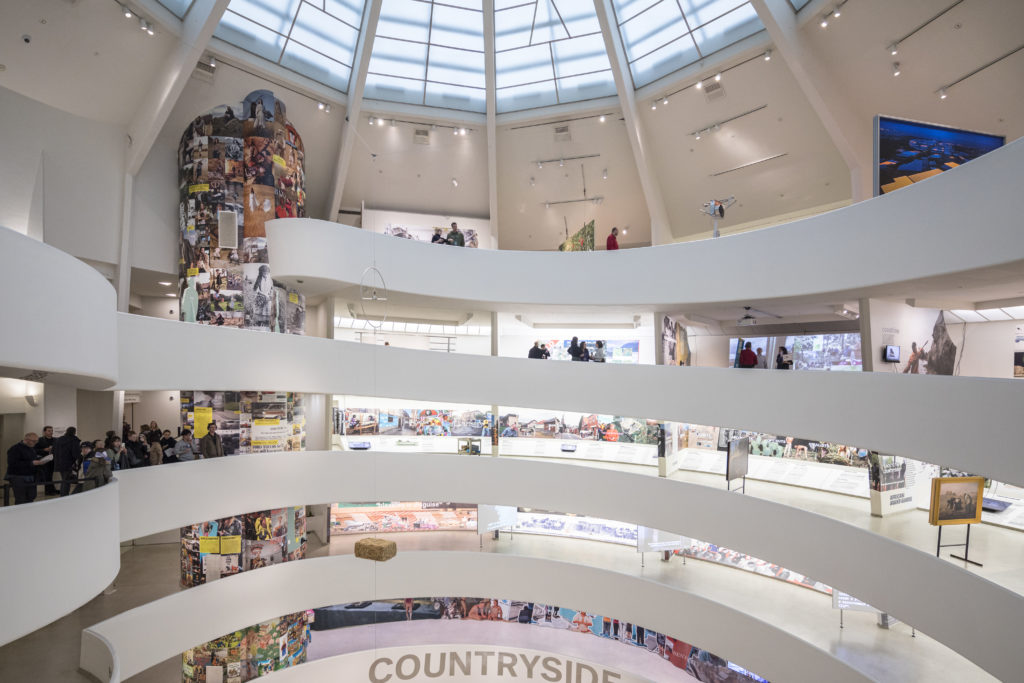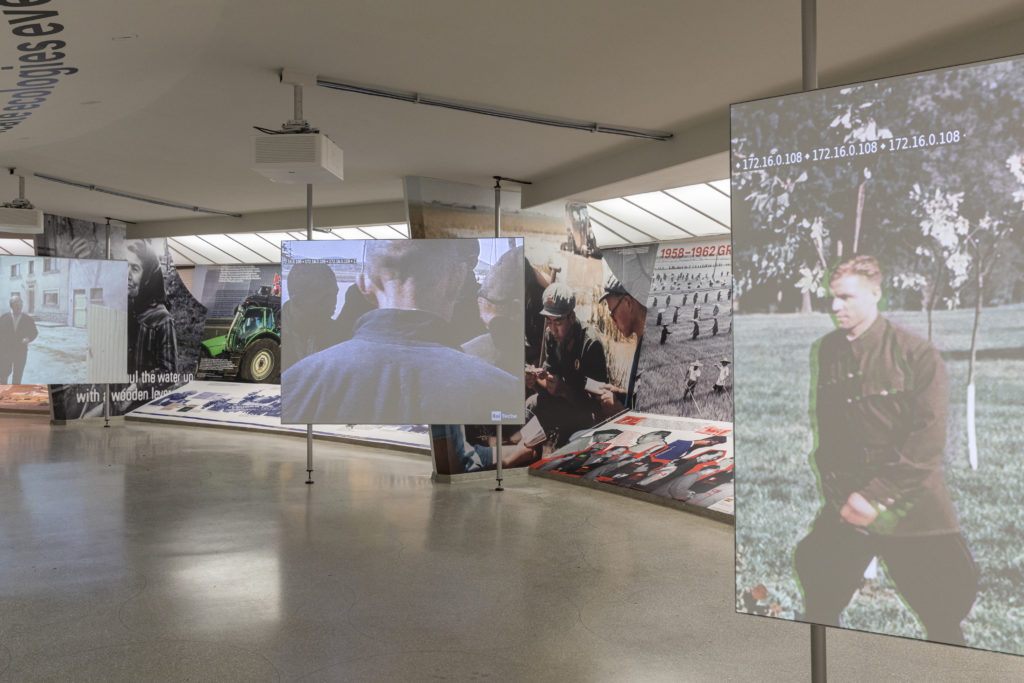Rem Koolhaas Takes Over the Guggenheim … With the Countryside

Architect Rem Koolhaas and Samir Bantal, director of AMO, the think tank of the Office for Metropolitan Architecture, have collaborated to present the exhibition Countryside, The Future at the Solomon R. Guggenheim Museum.

Countryside, The Future is on display from February 20th through August 14th; photo by Laurian Ghinitoiu courtesy AMO
Countryside, The Future isn’t an art show, nor is it an architecture one. Rather, it’s a comprehensive exploration of the side of the world that isn’t marked by dense amalgamations of buildings, street grids, mass transit systems, poor air quality, and half of all humankind. Namely, it explores radical changes in the rural, remote, and wild territories that can be identified as the “countryside”, or the “98% of the Earth’s surface not occupied by cities.”
The exhibit shifts away from the much promoted and regurgitated discourse around the assumption that ever-increasing urbanization is inevitable. Instead, it focuses on uncovering the untold challenges, innovations, blights and potential of the countryside. The exhibit examines the dynamic between these two “worlds”, a relationship that is gravely imbalanced, yet reciprocally depended upon.
As stated in the exhibit’s press release: “A central thesis of the exhibition is that our current form of urban life has necessitated the organization, abstraction, and automation of the countryside at an unprecedented scale.”

Rigidity enables frivolity, left: Mishka Henner, Feedlots, 2013 right: Queen Elizabeth Olympic Park, London 2018; photo by Luca Locatelli
This transfiguration of the countryside is put on full display, making it appear more as the world’s laboratory instead of serene oasis, in which everything from data storage and fulfillment centers to genetic engineering and robotic automation are presented as endeavors that are “more actively explored and experimented within the countryside than the city.”
“This is a collection of new and old ideas that aims to rediscover the dynamics of the countryside,” explained Samir Bantal, Director of AMO. “A place many of us think of as stable and slow-moving is revealed as an incredibly agile and flexible realm, even more than any modern metropolis.”
The exhibition journeys through time, with history serving as a primary component informing the narrative of the countryside. Case studies presented through imagery, film, archival materials, wallpaper graphics, a printed curtain, objects, text, reproduced artworks and robotic sculptures fill the six levels of the Guggenheim’s rotunda.

A variety of visual forms comprise the exhibit; photo by Laurian Ghinitoiu courtesy AMO
Each level presents a different theme, spearheaded by a diverse array of voices. Koolhaas and AMO worked in tandem with students at Harvard Graduate School of Design, the Central Academy of Fine Arts in Beijing, Wageningen University in the Netherlands and the University of Nairobi to help contextualize different aspects of the study.
Before even entering the museum, visitors are met by a hermetically sealed industrial grow container cultivating tomatoes under pink LED lights and finely tuned microclimate. If that doesn’t seem out of place, visitors will definitely be surprised to see a daunting, state-of-the-art Deutz-Fahr tractor used in industrial farming parked right outside the front entrance.
The street-level floor of the museum is full of activity and symbolism. Cut-outs, objects, and extracts in the style of an ancient Roman unswept floor are coupled with a suspended small imaging satellite, an industrial-size bale of hay, and a COTsbot (a predatory starfish-killing underwater drone).

The hanging industrial-size bale of hay; photo by Laurian Ghinitoiu courtesy AMO
Visitors are then guided through the levels of the exhibit, which are respectively labelled as High Gallery: Introduction, Leisure and Escapism, Political Redesign, (Re-) Population, Nature/Preservation, and Cartesianism.
Countryside, The Future dives deep into the concept of the “countryside”. The exhibit reflects on its significance and showcases how the image of rural space continues to evolve. What was once the space of “creative and idealized existence” is now ‘Wellness’, a commercialized, trillion-dollar industry. This is just a single example of this evolution.
The countryside has been used as a political, social and economic tool, which has had massive implications on the world. However, the main takeaway from this exhibit is that the countryside is simultaneously being degraded while providing the “landscape” for the world’s solutions. A better balance between such disparate environments is needed if we are to see continued development and sustainable growth.
Countryside, The Future is on display from February 20th through August 14th.
Architects: Showcase your next project through Architizer and sign up for our inspirational newsletter.
The post Rem Koolhaas Takes Over the Guggenheim … With the Countryside appeared first on Journal.
, Nathaniel Bahadursingh, read more Journal http://bit.ly/2uo5sWQ
Yorumlar
Yorum Gönder